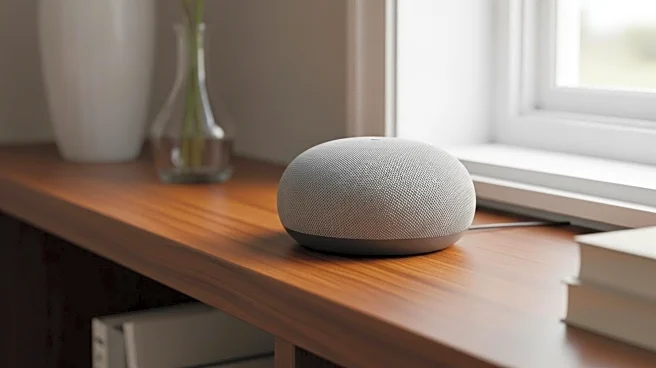What is the story about?
What's Happening?
CNET has published guidelines on where not to place Amazon Alexa devices to ensure optimal functionality and privacy protection. The article highlights five specific locations to avoid: near toilets, sinks or stoves, windows, under TVs, and in front of space heaters. Placing Alexa devices in these areas can lead to damage from water or heat, privacy risks from external access, and unwanted activation from TV commands. The article suggests alternative locations such as mantles, bedside tables, and corners of living rooms away from windows to maximize the device's utility while minimizing risks.
Why It's Important?
The placement of smart home devices like Amazon Alexa is crucial for maintaining privacy and ensuring the device functions correctly. Improper placement can lead to security vulnerabilities, such as unauthorized access to connected smart home devices, and can compromise the device's longevity due to environmental factors. As smart home technology becomes more integrated into daily life, understanding how to safely and effectively use these devices is essential for consumers. This guidance helps users make informed decisions about device placement, enhancing both security and user experience.
What's Next?
As smart home technology continues to evolve, consumers can expect more advanced features and integrations, necessitating ongoing education about best practices for device placement and usage. Manufacturers may also develop new designs or features to mitigate risks associated with device placement, such as improved waterproofing or enhanced security protocols. Users should stay informed about updates and recommendations to ensure their smart home devices remain secure and functional.
Beyond the Headlines
The advice on Alexa device placement underscores broader concerns about privacy and security in the era of smart home technology. As these devices become more prevalent, the ethical implications of data collection and potential misuse by unauthorized parties become increasingly significant. Consumers must balance convenience with privacy, prompting discussions about the responsibilities of manufacturers in safeguarding user data and ensuring device security.
AI Generated Content
Do you find this article useful?













